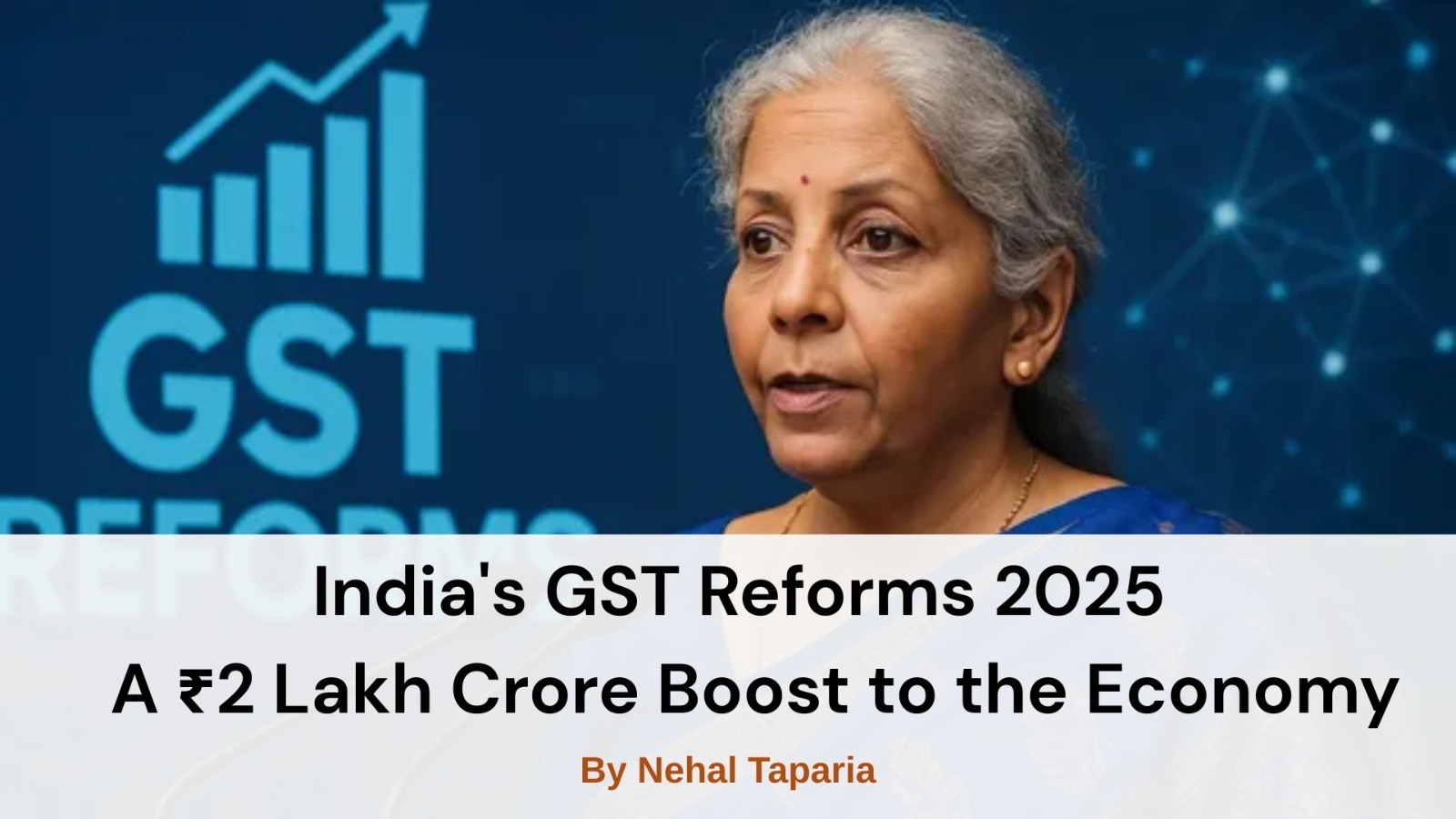India's GST Reforms 2025 – A ₹2 Lakh Crore Boost to the Economy

India's GST Reforms 2025 – A ₹2 Lakh Crore Boost to the Economy
In a landmark move, Finance Minister Nirmala Sitharaman announced significant Goods and Services Tax (GST) reforms that are set to inject ₹2 lakh crore into India's economy. These changes, effective from September 22, 2025, aim to simplify the tax structure, reduce consumer prices, and stimulate economic growth.
Key Highlights of the GST Reforms:
Simplified Tax Slabs: The new GST structure consolidates the existing four tax slabs into two: 5% and 18%. This simplification is expected to ease compliance for businesses and reduce administrative burdens.
Reduced Tax Rates on Essential Goods: Items such as dairy products, packaged foods, household goods, toiletries, and consumer appliances will see a reduction in tax rates. This move is anticipated to lower the cost of living for the average consumer.
Tax-Free Insurance Premiums: Premiums for health and life insurance policies will now be exempt from GST, making insurance more affordable for individuals and encouraging greater financial security.
Boost to Consumer Durables: The tax cuts on consumer durables like air conditioners, televisions, and cars are expected to stimulate demand in these sectors, benefiting both manufacturers and consumers.
Impact on the Indian Market:
Increased Disposable Income: With lower taxes on everyday goods, consumers will have more disposable income, leading to higher consumption and demand across various sectors.
Economic Growth: Economists project that these reforms could add 50 to 70 basis points to India's GDP growth over the next 4–6 quarters, effectively neutralizing the negative impact of higher US tariffs.
Positive Market Sentiment: Stock markets have responded positively to the announcement, with sectors like automobiles and consumer goods witnessing increased investor interest.
These GST reforms represent a significant step towards a more consumer-friendly and efficient tax system in India. By reducing the tax burden on essential goods and services, the government aims to stimulate economic activity and improve the standard of living for its citizens.
By Nehal Taparia
This content is for educational and knowledge purposes only and should not be considered as investment or Trading advice. Please consult a certified financial advisor before making any investment or Trading decisions.
Our Recent FAQS
Frequently Asked Question &
Answers Here
Q1: What are the new GST tax slabs introduced?
The new GST structure features two tax slabs: 5% and 18%. This simplification replaces the previous four-tier system.
Q2: Which products will see a reduction in tax rates?
Q3: Will insurance premiums be affected by the new GST reforms?
Q4: How will these reforms impact the economy?
Q5: What sectors are likely to benefit the most from these changes?
Copyright © By Empirical F&M Academy. Design & Developed by Techno Duniya


.jpg)


.jpeg)




